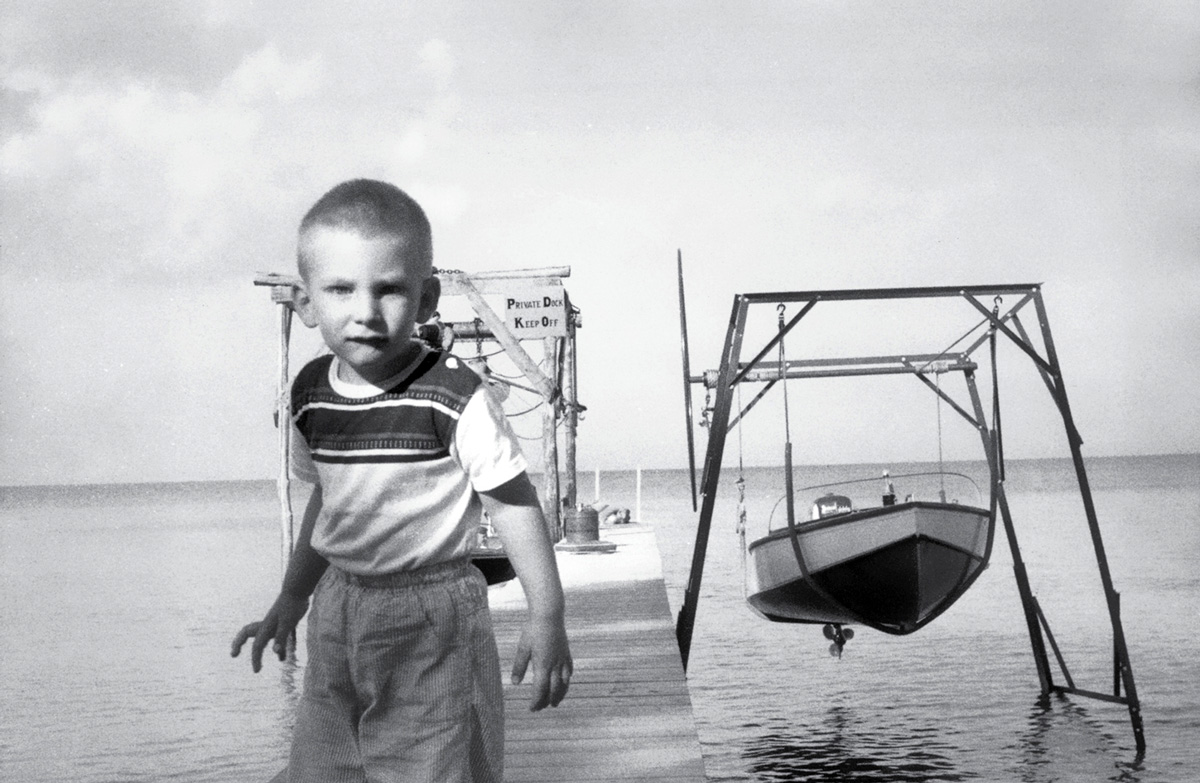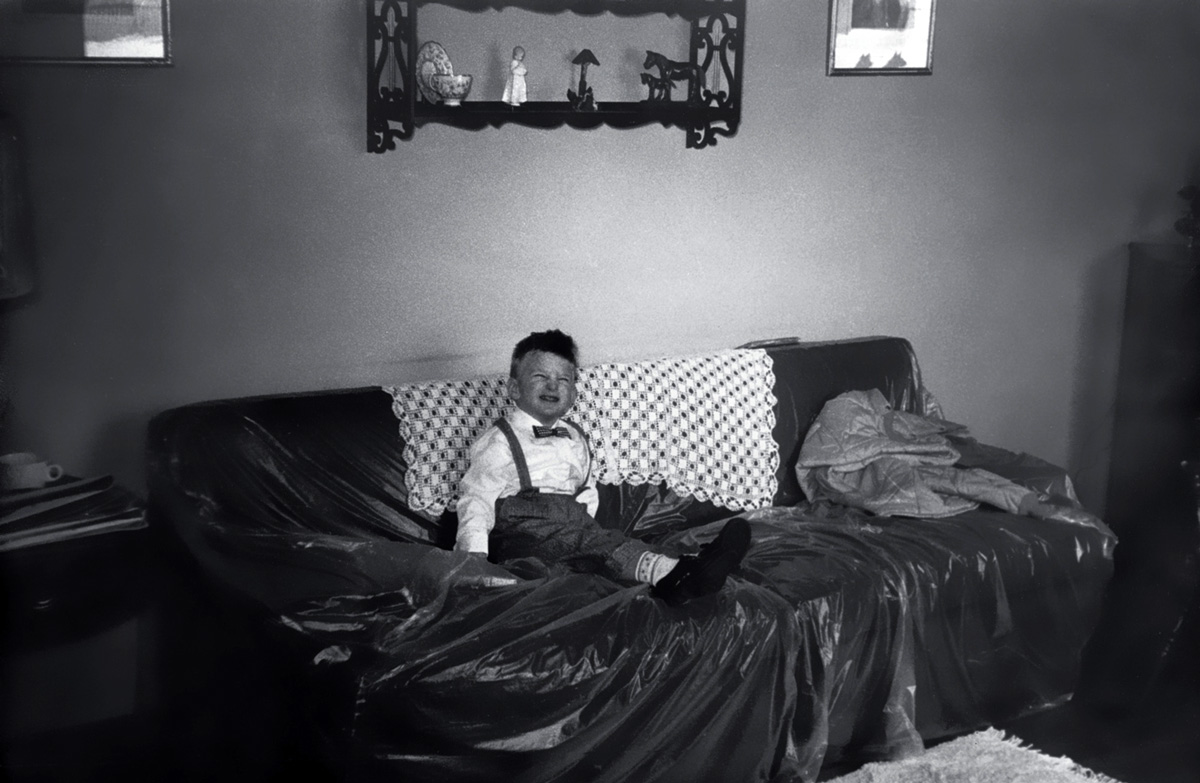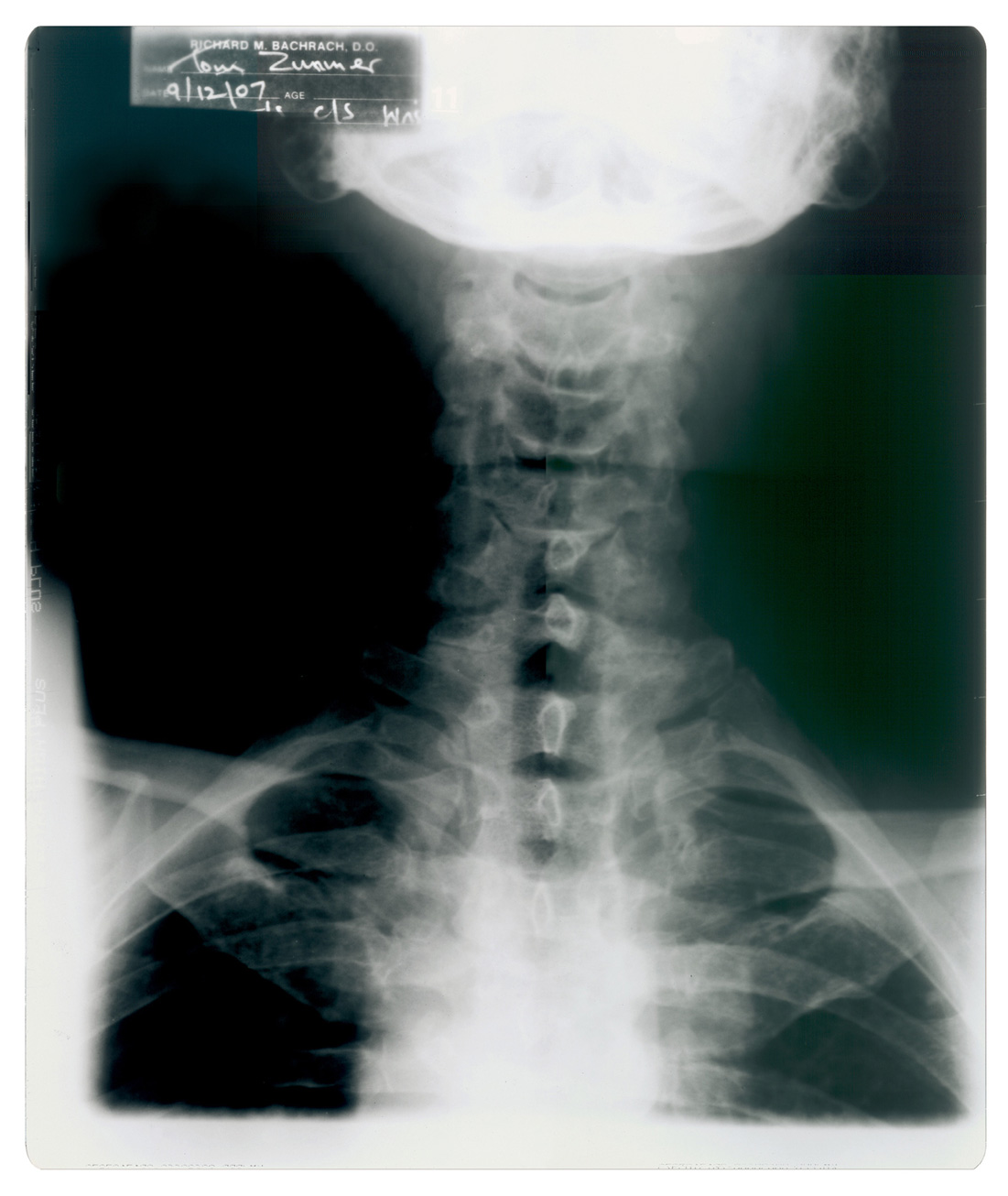Os Innominatum
The self between the skin
Thomas Zummer


I have an uncommonly good memory, and I recall precisely the events enframed by these photographs. They were taken by my aunt Emeline with an Argus C3 35mm camera (she had later given me that very camera) in late summer, at my grandparents’ place on the shore of Lake Huron, in Arenac County, just outside the small village of Au Gres, Michigan. I am the subject of many of these pictures; I was around three years old, and also present were my mother and grandmother, and my infant sister. It was late in the day, what cinematographers refer to as the “golden hour,” and the sand was cool; the water was calm, the sound subliminal and musical. I was standing on a towel, a checkerboard pattern of green and white with a series of complementary black lines. My pants were tan corduroys; my shirt a pullover T, sky-blue, black, olive, and tan. I have a stone in my mouth. It is a small, smooth, well-rounded green sedimentary stone, a form of littoral precipitate of which I am still particularly fond (I also still have the stone). My posture, I had noticed, is curious—I look as if I am doing a three-year-old’s imitation of Max Schreck in Murnau’s Nosferatu. Behind me, the boat hoist on the right side of the image is homemade from welded angle iron, and painted forest green, one of a great many details which come unbidden to memory. But what is most curious is that I was—as I am still—unable to suture this photographic image to the order of memory of those events. I cannot “put myself into” the image, or think through it, such that it is bound to the same time and circumstance of remembrance. I am similarly unable to “consume” this image, to integrate and make it a part of me, to secure its prosthesis as my own, an invisible and unrecognized insertion of the photographic as artificial memory. It confers only a salient and exterior supplementarity.
There is a second photograph, also taken by my aunt Emeline, this time in the house where I grew up, in Saginaw, Michigan. It’s around three in the afternoon, in my parents’ living room, and I am a bit older than in the previous photo. The composition is diagonal, and I am sitting on a couch that has been covered in plastic. There is an ornamental shelf, carved black walnut, above me, and two framed images hang on either side of it. At the far end of the room, there is a fireplace. What is not visible within the photograph is the large picture window directly across from the couch I am sitting on, and a second couch, under that window. I am facing the camera, and my face is screwed up, not only because of the flash of light, but also because I am annoyed. The camera had startled me, interrupting my observation of the events occurring outside, on the sidewalk, in our front yard. I had seen something through the window that was quite unusual in our neighborhood at the time, something which was, for me, absolutely novel: strolling leisurely along the sidewalk, unaccompanied, were two large black dogs, the first I had ever seen, and I was thoroughly fascinated. Something in my countenance must have impressed itself upon my aunt, and she snapped a picture. By the time my vision cleared, the dogs were gone. As I looked at the photograph of this event —an image I had never before seen— I noticed that, just visible in the lower portion of one of the framed pictures on the wall, to the right above the wrapped couch, were the reflected heads of the two dogs I had been observing. While this is, in exegetical terms, a triviality, one which is both private, and accessible only through the testimony of a witness of unverifiable veracity, it also, in its minute provisionality, touches upon certain philosophical issues concerning memory, cognition and mediation that are of a broad and pressing import.
What is opened to question is the relation, via the traces rendered salient by an interceding technology, that one has to one’s self, body, and memory, a species of recognition that takes place in relation to other forms of reflection. Technologies embodied as a stratum of technical unconscious produce an artifactuality wherein the distinctions between natural and prosthetic perception are suspended. The somatic relation between images and sensations, especially where transmission and reception are coextensive in a “live” imaging of the body (e.g., sonogram, but also television, radio, surveillant, or online systems) are indistinguishable, even when such evidentiary traces are superimposed with virtual, probabilistic, normative, or generalized models.
—Gilles Deleuze
Otherwise the recording can take place but remains unknown.
—Jean-François Lyotard
For all of its increasing sophistication, the camera, mobile or static, remains an instrument of citation, a “writing in/of movement and light” that secures only the most minute movement as it flashes by. Still, when we see what a camera has recorded, there is nonetheless a reflex, hardwired within us, that perceives movement, and even reflection, as substance, a reflex which compels us to recognition in/for/as response to an other, an artifactual other seen as having appeared either within the frame of the image or operating at its presumed point of origin. Facial recognition, for example, is one of our earliest unconscious accomplishments, and the camera intervenes in that, to present a technically reproducible shadow, an apparition of presence, one that operates at the same time as an index of loss. Benjamin’s substitution of an “unconsciously penetrated space” where prosthetic perception introduces us (via the intercessionary technics of the camera) to an “unconscious optics” (and to similarly unconscious impulses) but only at a remove, a certain proximity outside the image or scene, couples the compulsion to repetition with the promise of recuperation. There is, in this uncanny doubling of the camera’s unconscious optics with our own impulses, a technico-philosophical sleight of hand that purports to secure the whole of the real, so that cinematic perception is folded back into our own experience, an artificial memory, naturalized and subsumed, holding forth the proleptic promise of recall, even as its disturbance circumscribes a doubled site of absence.
What we thought were sensations have become ghosts, transfixed in a flash, mere afterimages. There is a phantasmatic aspect in the naturalization of the cinematic: we are haunted by images, traces of an elsewhere that we have made our own, domesticated fragments that we have compelled to enter into strange and familiar relations, differential economies of sense. Presence deferred to an impossible proximity, but not lost entirely. What happens when the phrasing, or parsing, of such phantasmata appear as having already taken place, where there is an anteriority revealed, brought to light, within the paradoxical necessity and impossibility of the prosthetic?

Thomas Zummer is a Brooklyn-based independent scholar, writer, artist, and curator. He is a frequent lecturer and author on the relations between philosophy, aesthetics, media, and the history of technology. He currently teaches in the Media Studies Department at the New School, and is Regular Visiting Professor in the Transmedia programme/postgraduate in Brussels and Visiting Professor at the Transart Institute in Linz, Austria. His artworks have shown worldwide and he is represented by Frederieke Taylor Gallery in Chelsea.
Spotted an error? Email us at corrections at cabinetmagazine dot org.
If you’ve enjoyed the free articles that we offer on our site, please consider subscribing to our nonprofit magazine. You get twelve online issues and unlimited access to all our archives.